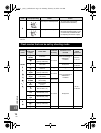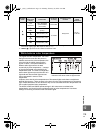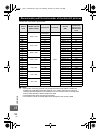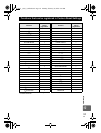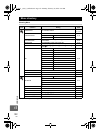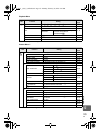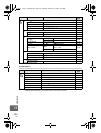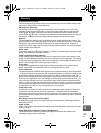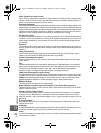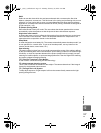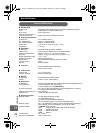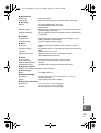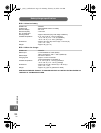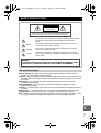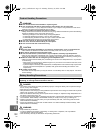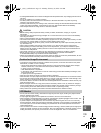
126
EN
13
Information
DPOF (Digital Print Order Format)
This is for saving desired print settings on digital cameras. By entering which images to print
and the number of copies of each, the user can easily have the desired images printed by a
printer or print lab that supports the DPOF format.
Eclipsing (Vignetting)
This refers to when an object obscures part of the field of view so that the whole subject is not
photographed. Vignetting also refers to when the image seen through the viewfinder does not
exactly match the image shot through the objective lens, so the photographed image includes
objects not seen through the viewfinder. In addition, vignetting can occur when an incorrect
lens hood is used, causing shadowing to appear in the corners of the image.
EV (Exposure Value)
A system for measuring exposure. EV0 is when the aperture is at F1 and the shutter speed is
1 second. The EV then increases by 1 each time the aperture increases by one F stop or the
shutter speed increases by one increment. EV can also be used to indicate brightness and
ISO settings.
Exposure
The amount of light used to capture an image. The exposure is determined by the length of
time the shutter is open (shutter speed) and the amount of light that passes through the lens
(aperture).
Image pickup device
This converts light passing through the lens into electrical signals. On this camera, light is
picked up and converted into RGB signals to build a single image.
Imager contrast detection system
Focusing method based on the contrast of the image of the subject captured on the image
pickup device.
ISO
International abbreviation for International Organization for Standardization. The sensitivity
setting used in digital cameras is based on the same ISO standard used for film sensitivity.
The sensitivity is denoted as shown in “ISO 100”. Higher ISO values indicate greater
sensitivity to light, so images can be exposed even in low-light conditions.
JPEG (Joint Photographic Experts Group)
A compression format for color still images. Photographs (images) shot using this camera are
recorded onto the card in JPEG format when the Record mode is set to a setting other than
[RAW]. By downloading these images to a personal computer, users can edit them using
graphics application software or view the images using an Internet web browser.
M (Manual) Mode
The user sets both the aperture and shutter speed.
NTSC (National Television Systems Committee) / PAL (Phase Alternating Line)
Television formats. NTSC is mainly used in Japan, North America and Korea. PAL is mainly
used in Europe and China.
Number of pixels (PIXEL COUNT)
The number of dots (pixels) used to create an image denotes the image size. For instance,
an image in 640 × 480 pixel count is the same size as the computer screen if the monitor
setting is also 640 × 480. If the monitor setting is 1024 × 768, the image only takes up part of
the screen.
P (Program) Mode
Also called Program AE mode. The camera automatically sets the best shutter speed and
aperture for the shot.
PictBridge
A standard that enables digital cameras and printers made by different manufacturers to be
connected, and also allows pictures to be printed directly from the camera.
Pixels
A pixel is the smallest unit (dot) used to make up an image. Clear large-sized printed images
require millions of pixels.
s0016_e_00_0_unified.book Page 126 Monday, February 18, 2008 2:43 PM



